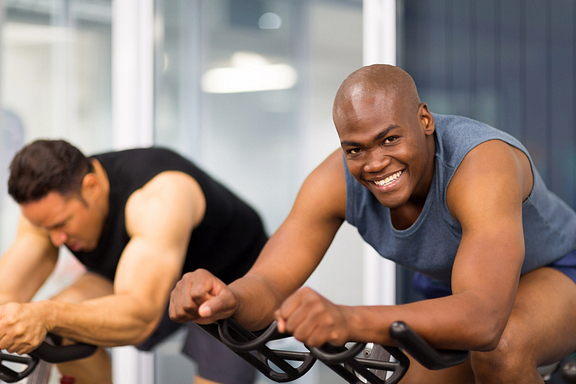Let’s face it, most of us don’t take very good care of our spines. This lack of care can lead to physical discomfort and make us susceptible to future injuries and complications.
Do your spine—and your overall health—a favor and take the time to treat your spine to a few of these 11 indulgences:
1. Make exercise a lifestyle
Exercise is essential when it comes to maintaining a healthy spine—and it can also aid in the rehabilitation of your injured spine.
2. Engage your mind
If you suffer from chronic pain or discomfort associated with your spine, take the time to engage in mindful meditation every day. While no single treatment option works for everyone, studies have shown that mediation is an effective tool for
fighting chronic back pain.
A daily mediation requires only a dark, quiet room and 15 minutes of your time. There is no right or wrong way to meditate, but you might try focusing on a pleasant, relaxing place—such as the beach—where you feel carefree and comfortable.
3. Reevaluate your sitting posture
Your spine has a series of natural curves, and if your typical sitting posture does not support these natural curves you may damage your
sensitive spinal nerves.
If you have a job that involves a lot of sitting, take time to make sure your office chair and desk are ergonomically aligned to support your spine. Additionally, consider working at a stand up desk or sitting on an exercise ball for a portion of the day. Last but not least, it’s a good idea to stretch and walk around every half hour.
4. Go for a walk to help support your spine
The benefits of walking are plentiful, including strengthening the core muscles that keep your body upright, nourishing spinal structures with necessary nutrients, improving flexibility, and strengthening your bone structure.
If you're in pain, be sure to get clearance from your doctor before starting any new walking program. Often, a doctor's recommendation will be for you to walk as much as can be tolerated. If you are new to walking, or if you're dealing with pain, start out with several short walks each day rather than a single long walk. Additionally, consider walking in a pool to minimize the pressure on your spine if your pain is severe.
5. Soothe your pain with heat therapy
Applying heat to the muscles around your spine increases blood flow, which in turn brings healing nutrients to your muscles. Heat therapy can also reduce pain associated with the muscles and joints around your spine—and it may relieve your muscle spasms.
There are many options for the local application of heat therapy. You can try heating pads, heat wraps that adhere to your lower back and deliver a low level of heat over several hours, warm gel packs, hot water bottles, or a warm bath. Heat therapy is largely a matter of personal preference, so you may need to try a few options to see what works best for you.
6. Match your pillow to your sleeping position
When you lie down to sleep, you want a pillow that supports the natural curve of your neck. This means that people who prefer different sleeping positions will need different kinds of pillows.
For example, if you sleep on your side you typically will need a thicker pillow to ensure your neck and head are positioned in the middle of your shoulders. Your height and the width of your shoulders will help determine the kind of pillow you ought to buy—so if you’re petite you will need a slimmer pillow than if you’re broad-shouldered.
7. Choose your food wisely
Your daily diet plays an important role in maintaining the health of your spine. Try limiting your diet mostly to foods you would find in nature—vegetables, fruits, meats, whole grains, and legumes. Eventually try to eliminate processed foods entirely, and make sure to limit unhealthy sweets to an occasional treat.
Additionally, eating foods that are high in calcium and other nutrients and vitamins can help prevent spinal problems like
osteoporosis and
osteoarthritis. Finally,
maintaining a proper weight through exercise and a healthy diet can reduce pressure on the spine and minimize back pain.
8. Exercise in the water
Exercising in a pool reduces the downward stress of gravity as the buoyancy of water helps to support your spine, thus reducing the risk of injury or pain during certain exercises. In addition, the viscosity of water provides gentle resistance by means of friction.
Water therapy programs are usually taught in warm water, and many people find the warmth soothing on their joints.
9. Treat yourself to massage therapy
Studies show that massage therapy is an effective treatment for some types of back pain. Massages offer several potential benefits, including improving blood circulation for the recovery of sore muscles, restoring spinal range of motion, helping with insomnia, and upping your endorphin levels—the body's natural chemicals that boost your feel-good emotions.
10. Resolve to quit smoking
Smoking increases your likelihood of developing degenerative spinal disorders and back pain. The reason for this is that smoking damages the vascular structures of your spinal discs and joints.
Quitting is difficult, but there are many products, support groups, and strategies that have worked for thousands of people.
11. Lift correctly
Improperly lifting heavy items can put your lower back muscles in abnormal positions that may lead to painful muscle strains. Additionally, improper lifting may cause your spinal joints to lock or your spinal discs to rupture.
Correct lifting involves more than just incorporating your knees. It’s best to keep your chest forward and lead with the hips rather than the shoulders.
You may not be able to indulge in all 11 of the above suggestions, but pick 1 or 2 of the above ideas for indulging your spine that you can easily incorporate into your daily life. Over time, even small changes to your daily routine will add up to provide meaningful and sustained pain relief.
Learn more:
Call ABChiropractic Family & Wellness, in St. Charles, Missouri 63303 at 636-916-0660 to discuss how our Fast Pain Relief and Wellness Center can help you achieve your goals and eliminate pain.


